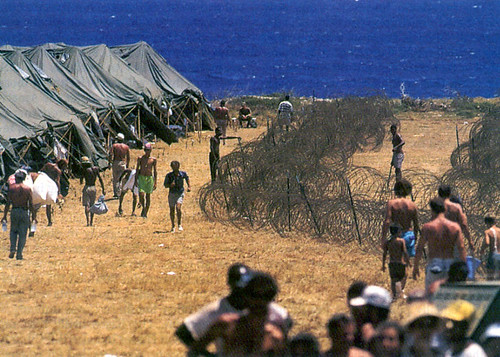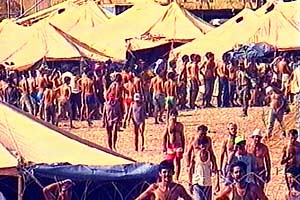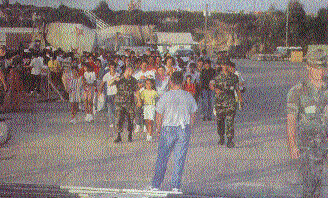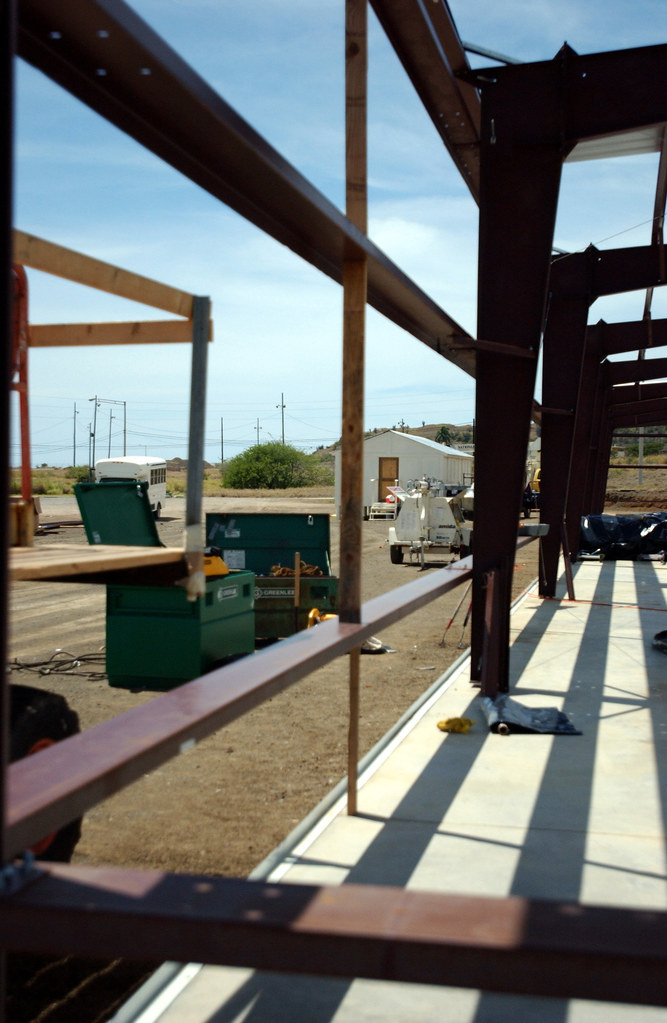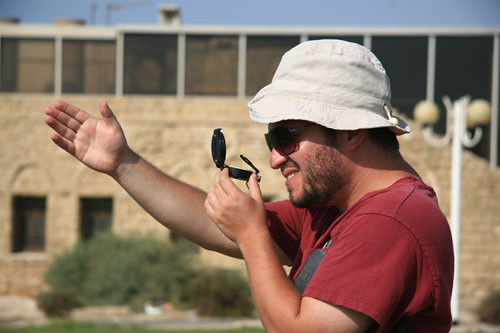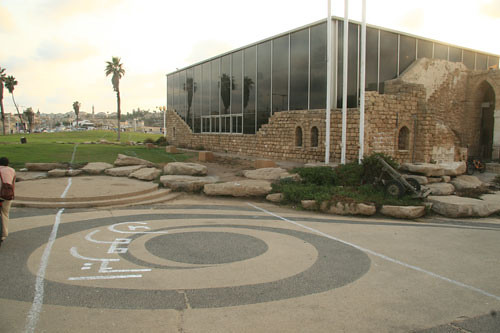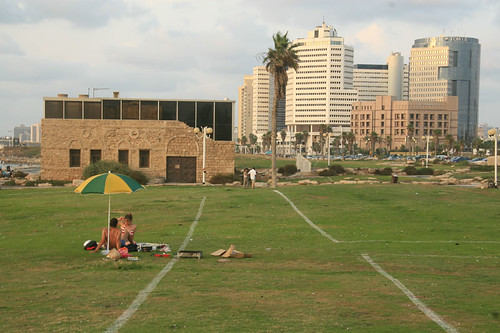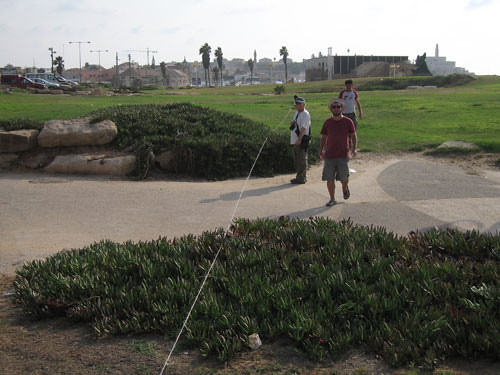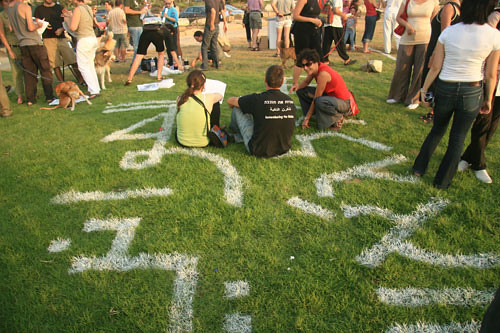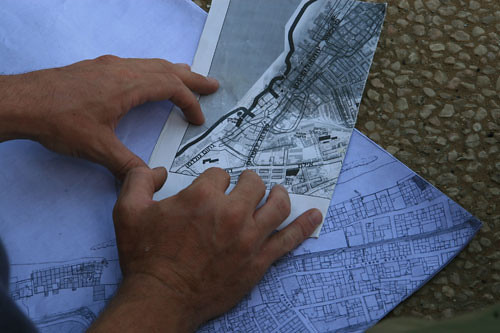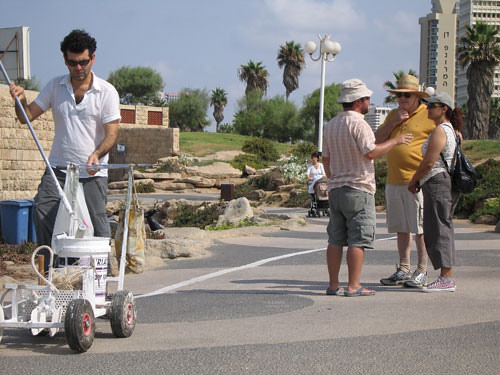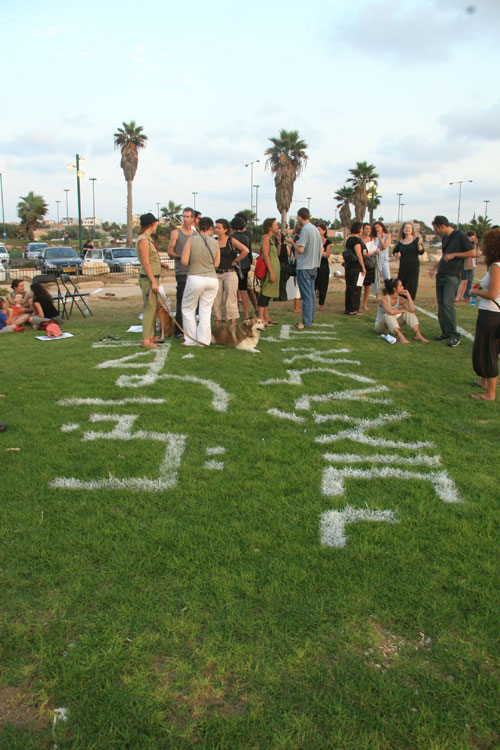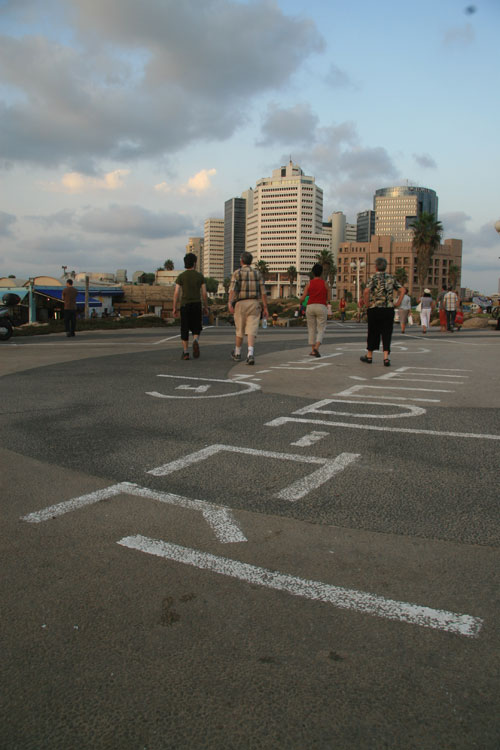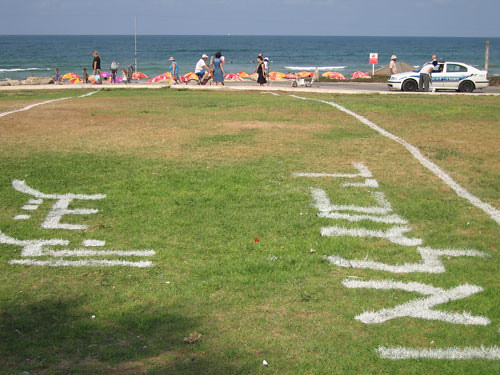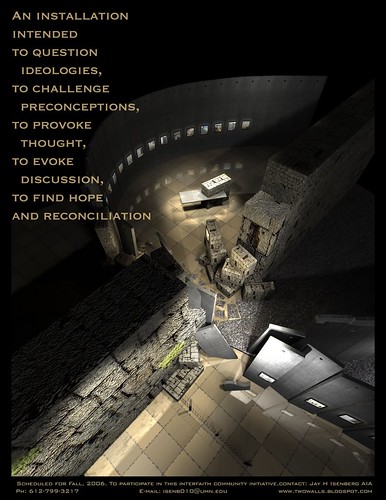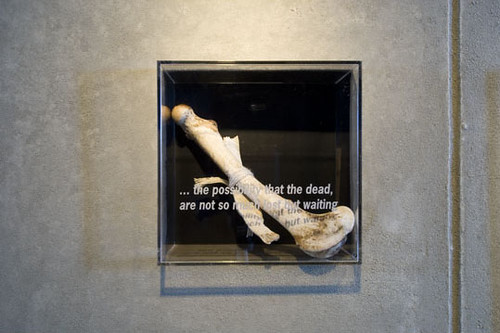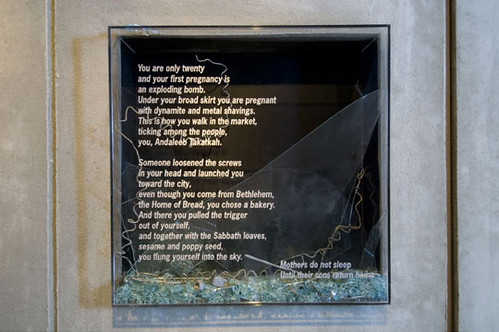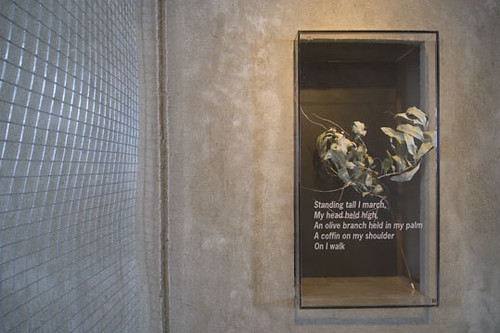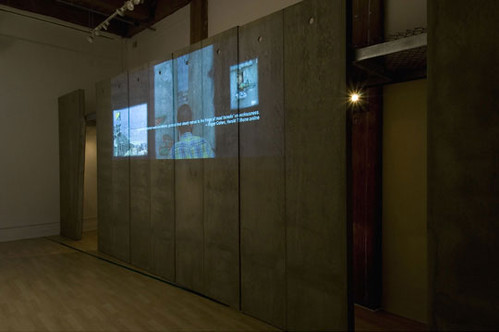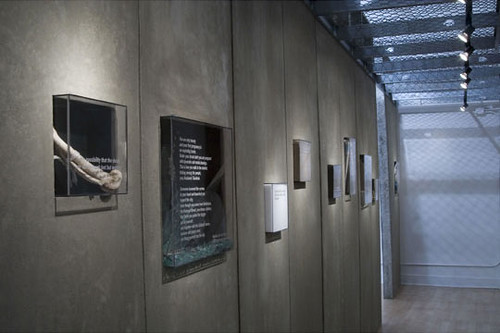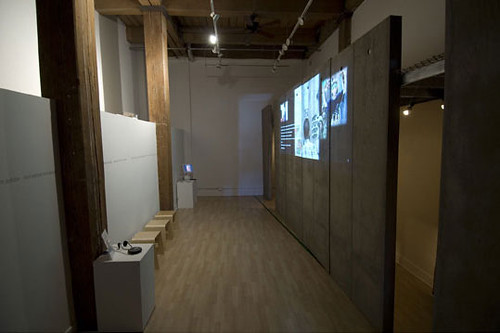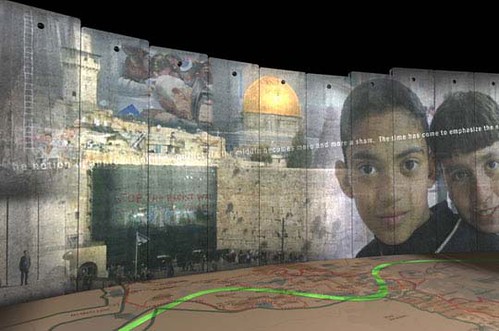Squatter Imaginaries
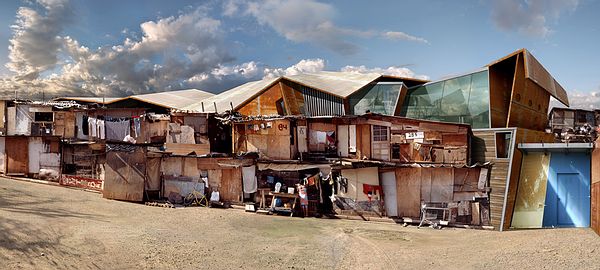
One of the most intriguing facets of Dionisio Gonzalez's photographic constructions is that they immediately question the viewer's knowledge of what a "slum" actually looks like and what are the political forces that shape slums. To that end, he asks us if "slum" is even an appropriate term at all. Viewers less familiar with these spaces may not detect the careful nuances of his work and instead simply digest these as neither appropriate nor inappropriate images of global poverty, but rather as ones that are simply real.
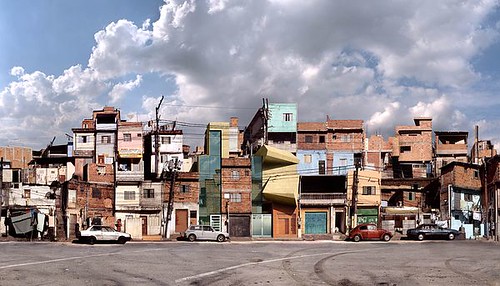
In my opinion, what is most important about any work of art is the actual effect it will have on culture and public perception. In this case, we are forced to ask what messages about squatter communities are being transmitted through these images? How are we supposed to view them in the first place? Despite the way they may look to us, how is it that those from the outside want to view these images in some way, and digest them as accurate portraits of squatter settlements? More importantly, how does one even responsibly represent global poverty anyway? It's a delicate subject and we need to be mindful whenever a representation like this is asserted for any group, especially one as politically charged as global poverty.
Gonzalez's depictions of the favela in Brazil are daring and clever and not only evoke a sensibility about how places of urban poverty can be seen as humane but ultimately captures an image of the contradictory landscape that lurks within these sites as well. In this sense, he not only shows us how extreme poverty looks but also how its landscape is politically produced – how spaces of poverty are formed from the inside. Through a kind of architectural ambiguity he shows us the organizational conflicts that squatters wrestle with in their struggle to survive, exposing tensions of being caught between the unnoticed accomplishments of their own self-assembly and of being re-imaged by some formal outside intervention that seeks to restore a certain order to their perceived chaos.

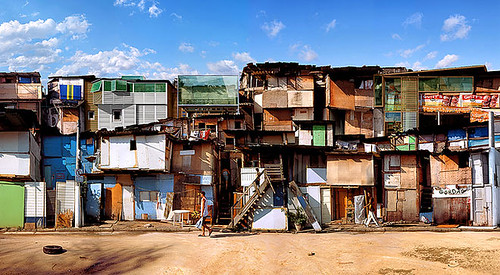
Given this conflict I think his images bring a dignity to the lexicon of visual references that commonly creates a public awareness (or a lack thereof) around these informal settlements and that have – for the most part – been defined by the media's dismal portrayal of global poverty. It seems like the media is always focusing on them in the wake of some disaster, a flood, a fire, or only as the evidence that human squalor does indeed still exist. Rarely does it seem the shanty is shown to us in light of its own exceptional operability, its vivacious culture - instead these elements may only be used to angle some sort of slumaphobia or slumsploitation of a kind of othered world poverty chic.
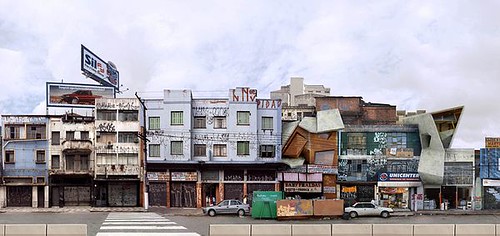
On one hand, we see the favela here as a colorful and humanized, somewhat un-depressed space of habitability in Gonzalez's eye – there is a sense despite the hyper-density that some spatial pressure has been relieved from the favela by its own doing, which runs counter to the typical collective imaginary of seeing shack dwellers as savages heaped in an insurmountable pile of urban depravity and debris. While, on the other hand, I'm not sure if his images actually alight a sense of social responsibility in the viewer in the way I think they are intended, or whether they unconsciously - and against their own will - reinforce this "civilizing" perspective of the favela as a place where spatial order needs to be imposed.
Viewing these images alone without any additional story or knowledge of Gonzalez's craft or explanation there is an undercurrent of two worlds fusing together in what almost casts a raw glimpse of the world's urban future where the continued global mixing of the Developed and Developing worlds begins to clash and architecturally blur, break down and ultimately reconstruct itself into something else looking like this. In fact "squatters" already constitute the largest single source of homebuilders worldwide today.

In this image (that almost assumes a tourist postcard perspective, ironically enough) the chaotic informality of the shacks suddenly rests upon one another in columns of a new kind of visual order. The sprawling totality of the unbridled favela is suddenly somehow geometrically grasped now, while in reality the spaces of the favela easily slip through our perspective's fingers as they are arranged by an unpredictable meandering of gaps and temporary walls, and a more or less incomprehensible maze-like logic of spatial circulation. We might say, in their very lack of formal planning, that the favlea is unwittingly designed to resist any sense of conformity to our organizational understanding – to our westernized viewing of them. However some of Gonzalez's renditions arrange the favela within a kind of logic of reform that is not altogether idealistic but is more discernible this way and confronts us with the question of whether the favela can even be rationalized or not.
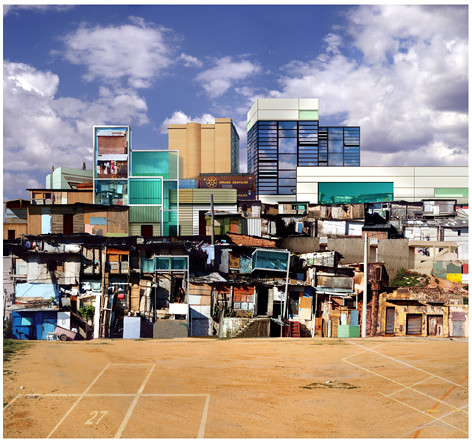
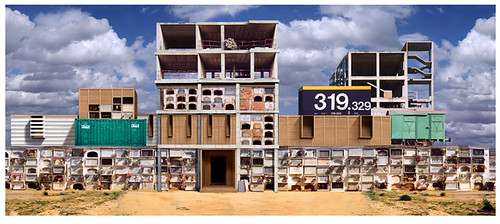
In viewing these images we can't be sure if the blend of scrap structures and more formal design elements are in overall harmony with the squats, or whether they are altogether entrenched in some sort of deeper disorganizational conflict. Are these subtle designs exerting any power over the settlement? Are these clean and modern signs of gentrification appropriate in any way, or simply ignorant of what is miraculously being improvised by the squatters on their own? Is Gonzalez suggesting that so-called globalization in this context translates to a modernized strategy for refining the typology of poverty and reshaping it into a more civilized image? Or, are these architectural interventions actually helping to buttress the vitality and natural evolution of the favela itself? The politics of space are absolutely critical to our own understanding of how spaces of poverty are not only produced but how they may be treated – and even how they may be seen.
Further toying with this ambiguity, his images provoke a realization that while the Third world is being threatened by creeping forms of gentrification a part of the "civilized" world is also being overcome by the scrappy rash of what we might call a Third Worldization. That is to say, even though we are definitively looking at the Brazilian favela there is an implication that the favela is also moving into these other urban sites of global wealth abroad. Somewhere therein the role of the architect is mediated. Essentially, as I read these images, Gonzalez is questioning whether architects and planners are merely adding to the spatial divides of global poverty and wealth, or whether there is a deeper humanitarian role for them to assume where they may be able to make a positive impact towards improving the conditions of the favela without re-imaging it. We must question, however, whether the ambiguity in these images suggests a positive interweaving of these worlds or whether it is the disguise for a more subtle bordering within them.

We might just as easily read these images as complexions of the spatial-ordering of global capital that is super-imposed onto places of informal settlement by architects and planners. Either way, the question of the architect's role is an astute reflection on Gonzalez's part because in actual practice this is a critical realm of engagement for the architect who seeks to address the sites of global poverty without giving into to a remaking of them – and I think Gonzalez's work brilliantly negotiates the sensitive nature of that terrain. Of course, another interpretation here is that the shack dwellers have managed to pioneer new uses of these foreign materials themselves and to some degree already represent the new breed of global architects today.
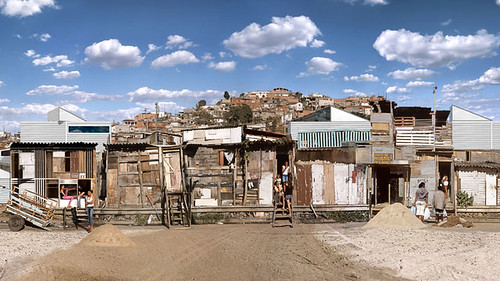
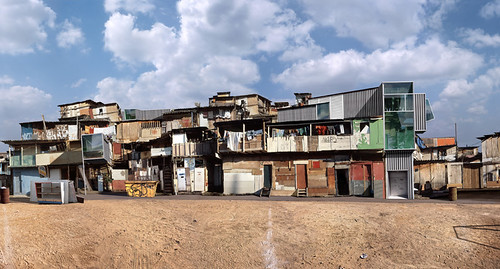
I think however we see these images if we examine them collectively it is clear that all of these issues are illustrated in them together offering perhaps a page-by-page un-layering of the internal/external overlap of the favela's urban archeology, where the intrinsicality of the favela collides with the outside projection of it, where politics are inherently cast in the structures of the favela as well as reinvented by some outside re-imagination of them. At the core, these images are about the favela's struggle to construct it own identity.
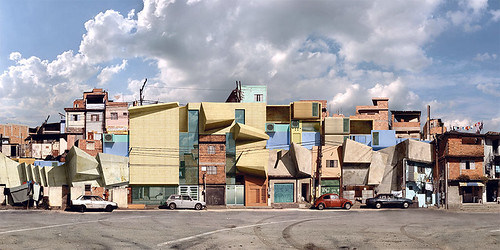
In a recent interview Gonzalez did for ZOOM magazine he mentioned how some of the most important urban renewal strategies in Brazil have failed due to the prevailing attitude that the shack dwellers "should be prescribed some kind of morality" through the state’s provision of replacement housing, and that "those invisible to the system should finally be cataloged" by it. He cites the Cingapura Project ("Brazil's most important shantytown re-urbanization and verticalization program") as a massive flop of an intervention because it unfurled no plan that was at all in accordance with the favela context itself, it neglected the favela-dwellers entirely by not ever discussing the project with them, and ultimately revealed itself to be an indexing structure for those laborers who were "invisible" and needed to be officially logged into the government's bureaucracy. His insights into the ways the disrespectful reform doctrine of the government’s re-urbanization planning are spatialized through these mega-housing projects are cogent and amazingly documented through these images. Gonzalez said much of his work is motivated to both make evident the less visible political landscape that dehumanizes the favela by re-imagining it through these types of "proletarian parks of verticalized operative housing" projects (as he calls them), and to help visualize an architectural alternative that can go with the favela and that will preserve what he refers to as a "symbolic de-categorization of their inhabitants."

[Image: Real Parque Favela's Cingapuras (via).]
One thing I find ironic about these billion dollar re-housing programs is that often times they are stated as a means to defeat the organized crime that operates within the favelas, yet the favelas themselves are also deemed these labyrinthine spaces of utter chaos. It's interesting to me that for a place that could be seen as so unorganized that the government believes their only scheme to defeat the "organized crime" of the favela is to re-organize the neighborhood physically to one that it horizontally ordered and fashioned according to the principles of official organizational planning.
In addition, Rob points out on his blog that even the well-oiled machine that is allegedly looking out for the squatters' best interests are not always completely in touch with what that may actually be.. This he illustrated in light of a recent $10m donation from the Gates Foundation to Slum Dwellers International (SDI) who's been found intimidating certain groups of squatters into joining their coalition.
Rob wisely writes, "SDI should note that with money and success comes responsibility to be inclusive. SDI tends to only work with groups that embrace it's own 'savings-plan' version of organizing. But there are many communities that don't see saving money as the best organizing tool, particularly if they are facing immanent eviction. SDI now has an opportunity to broaden its vision and its reach."
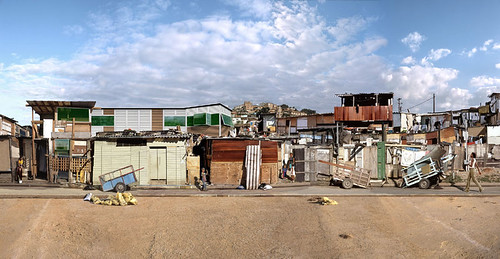
Another thing Gonzalez mentioned in the ZOOM interview was that it's not always that photographers get to propose architectural solutions. And as a non-architect myself I can relate to his inspiration here. Somewhere in his structural ambiguity he has not only I think envisioned a vibrant squatter-led future into urban salvage, but has helped us to see more clearly all of the complex layers of representation that go into both the (un)making and the simultaneous viewing of the sites and shanties of global poverty. Even more so, his images conjure the possibility of spaces still to come. That is, I view these images as both critical and constructively radical; in a constant state of becoming (like the shanty) they piece themselves together through perpetual transition, progressing, resisting, rooting themselves into their own place of being, architecting their own political future. When it's sometimes easier to just iterate the problem with an elegant critique, Gonzalez goes further to convey an alternative born of the shantytown, his own version of a re-urbanization plan using the fabric of the favela itself. In short, he portrays the favela as continuing to pioneer its own destiny, shape its own space. And quite honestly, I think his images are a brilliant visual re-constitution of what I’ve called a ‘squatter urbanism’ and - needless to say - I can't stop obsessing over them.
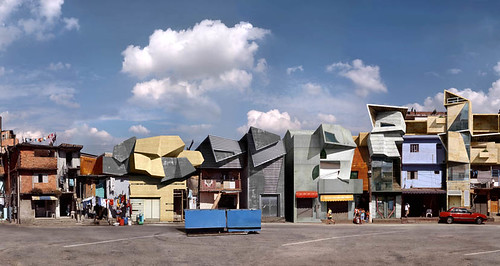
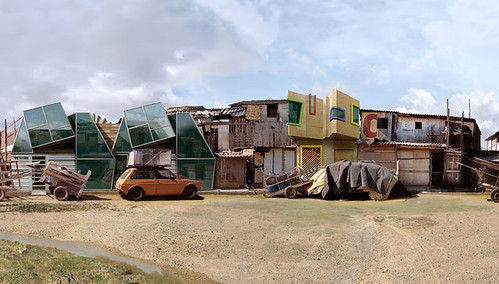
Be that as it may, I am also cautious (as I am reminded in the Flint piece) of obsessing over the image too far in a way that keeps detached from the more complex landscape behind it. No matter how we try to acknowledge this I realize I am not immune to falling into my own innocent love affair with an aestheticization of the image. Because in the end, even the images themselves play into their own kind of political imaginary, one that can be, as I've said, inadvertently complicit with the tropes that continue to dictate how poverty is viewed from afar, and so perhaps we also need to be willing to accept the more commonly overlooked perspective which is that – despite our best intentions and political conscience – it may be more useful in some ways to just let the squatter communities represent themselves.
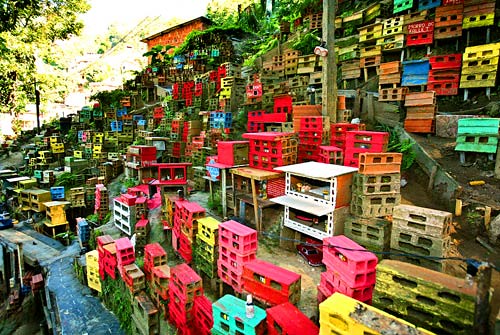
[Image: The Morrinho Project, from the LA Times, From the streets of Brazil, 2007, photo by Wania Corredo.]
On that tip, I am reminded of the Morrinho Project out of the Rio favela, Villa Pereira da Silva, better known as Pereirão. Regine covered this a while back, telling us that back in 1998, "kids built up a miniature reproduction of their favela (Pereirão, perched above the upper class Laranjeiras neighbourhood) using bricks and other materials left-over from building their own house. The model covers 300 square meters, and is inhabited by scavenged toys (plastic cars, little figurines carrying AK-47s or a ball, etc.) which are used to re-create scenes of everyday life in a favela: from dance events to clashes between gang members." She goes on to quote from an article that explained just how true-to-life this model was. So much in fact, that the police thought it was being used to help create a kind of favela war-plan and forced the kids to tear it down. Since then the model has gained a lot of attention and portions of it have traveled around the world and been reassembled in various art exhibitions, namely the Venice Biennale.
What I find most compelling about the project, which has since spawned its own independent TV production studio and guided educational tours of the neighborhood, while continuing to circulate the model in exhibitions, is the fact that it all started from this basic desire to build a replica of the community. And what an amazing job those kids did, too. Seriously. I mean, I am so curious of the process, what they did and did not consider building it, and why? With what new eyes they looked back upon their actual favela architectures? What specifically they learned about Pereirão while doing this, or what ideas/critiques came to mind about their favela, what they loved, wished they could change, etc.?
Or, what kind of healing component exists in the modeling and recreation of their neighborhood? Without sounding too psychoanalytic, I wonder if there isn't a kind of implicit therapy built into the project, through the remaking of the model, this total recreation of the community's physical layout? Could this be a much larger and informal kind of play therapy for children who have been exposed to horrendous violence? I don't know, there just seems like so much cathartic potential in something like this. Totally fascinating to me to say the least, and to think that this crazy stack of bricks and toys has spawned this NGO into action is pretty inspiring.

[Image: The Morrinho Project, from the LA Times, From the streets of Brazil, 2007, photo by Wania Corredo.]
There was a recent LA Times piece written about this as well, and the movie industry that's "looking to foster local talent and present a more nuanced picture" of the favelas while also seizing on the global pictorial trendiness of 'slum culture' that's gained the attention of Hollywood now with hits like City of God. This model has also provided opportunity for smaller local film collectives that can produce certain scenes now much more cheaply. The article mentions the acting troupe Nós do Morro and Cine Favela, a non-profit film making crew, both of whom have worked with members of Mirrinho. Check out the work, very cool stuff.
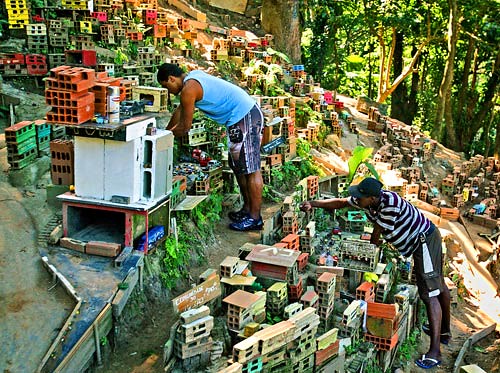
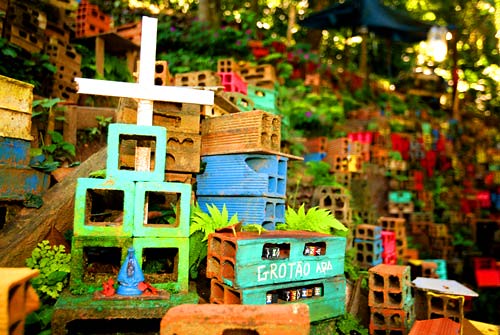
[Images: The Morrinho Project, from the LA Times, From the streets of Brazil, 2007, photo by Wania Corredo.]
I just love how the original replica served as a catalyst for this type of community building, local self-empowering, artistic activity. I wonder how we might all benefit from the same sort of exercise, building replicas of our own communities as a way to engage and examine them more closely. Of course, what's most important is that all of this emerged from within the favela itself, it wasn't airlifted in, designed from the outside, or photoshopped later, or demolished and recreated from scratch. It was recycled, remade, re-imagined out of their own scrap heaps, fancied into their own self-portraits, which gets back to my original thoughts about the shanty being able to tell its own story with its own material, through its own representations. This just seems critical to me - self-representation. I wonder how many stop to consider the autobiographic power of urban salvage this way.
All Images of Dionisio González's work can be found here: 1; 2; 3; 4)
(Spotted at Josh Spear, thanks to Michael!)


